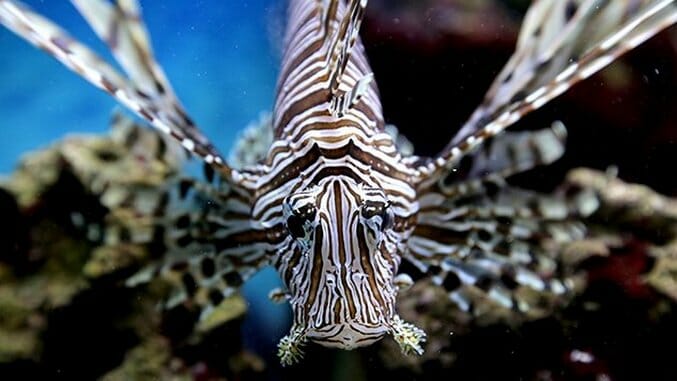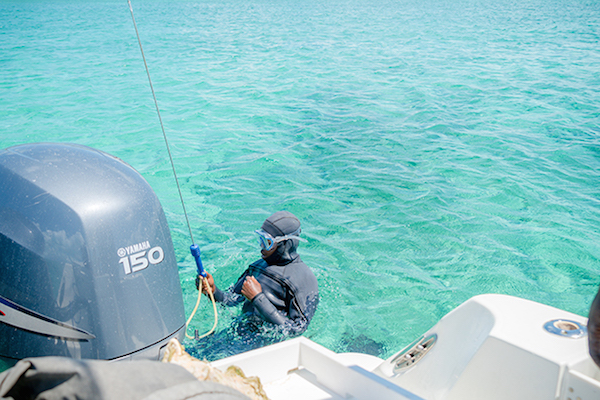Lionfish: Eating the Enemy
Image courtesy of REEF
Eleuthera is the birthplace of the Bahamas and was once noted as the pineapple capital of the world, but this authentic Bahamian island is also known for the invasive species, lionfish—an angelic-like fish identified for its reddish-brown zebra stripes and 18 venomous spines. Although these beautiful creatures are the showstoppers when snorkeling coral reefs in the Caribbean, the Gulf of Mexico and the Atlantic, they’re threatening marine life in these foreign waters.
Uncharted Territory
So, where’s home? These virulent predators are indigenous to the Indo-Pacific and the Red Sea but can be spotted at home aquariums across North America. In the 1980s it was rumored that fish tank owners released these rapid breeding fish into the Atlantic, causing lionfish to breed in non-native waters. With a female capable of releasing eggs every four days, it’s possible for her to release more than 2 million eggs a year. Not to mention they can consume more than 70 local fish and crustaceans a day.
“Lionfish are voracious eaters,” says Tricia Ferguson, assistant resort manager of The Cove Eleuthera and co-author of The Lionfish Cookbook: The Caribbean’s New Delicacy, the first recipe book dedicated to preparing this fish. “They consume all the native baby fish and sea organisms. If we don’t get a handle on the lionfish population, I believe native species have the potential to become endangered or extinct. Changes in the ecosystem are never a good thing due to invasive species.”
While it may be nearly impossible to eradicate them from their non-native land, it is possible to significantly reduce its densities. “It is important to capture the lionfish because they are an invasive species and have no known predators,” says Ferguson. So, if you can’t beat them, eat them.
 Photo courtesy of Aubrie Gerber
Photo courtesy of Aubrie Gerber
-

-

-

-

-

-

-

-

-

-

-

-

-

-

-

-

-

-

-

-

-

-

-

-

-

-

-

-

-

-

-

-

-

-

-

-

-

-

-

-

 Photo courtesy of REEF
Photo courtesy of REEF






































